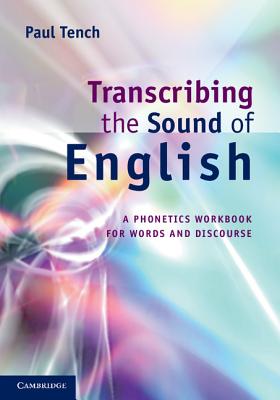Review ~ Transcribing the Sound of English
A complete explanation of how to transcribe the sounds of English as they occur in natural, conversational language.
Transcribing the Sound of English
Transcribing the Sound of English: a Phonetic Workbook for Words and Discourse, is designed for students of linguistics, and those who wish to learn how to write the sounds of English in a universal format. It offers something for everyone, from the complete linguistic novice, to the more experienced transcriber.
The book is divided into two parts: Words and Discourse. As a one-time student of linguistics, what I find particularly strong about this book is its presentation. The flow of information can be likened to a pyramid. It begins with a sweeping and simple look at individual phonemes, or sounds. As the text progresses, the information systematically moves from sounds in isolation, to sounds within words, to words within context (or the way in which they would naturally occur in spoken discourse). Since, of course, sounds rarely occur within isolation, the author builds upon each facet of the English sound system with increasing detail, affording the reader a most thorough explanation.
The first two chapters are great for students who are new to the topic, as they provide a comprehensive approach to transcribing the sounds of vowels and consonants. Both chapters include ‘quick tests’: short assessment exercises for the learner to gauge his or her progress. While these tests offer meaningful practice and useful measurement, the answers are not as accessible as some readers may like. Rather than included within the text like most workbooks, the Quick Tests’ answer keys are published on the accompanying website. This may be less than convenient for the learner who is away from his laptop or tablet. However, the keys are in pdf format, and thus easily printable. What is great about the website is that it includes an audio clip of each word and phrase included in the book. Thus, the learner can listen to the pronunciation, if need be, during transcription.
As the reader progresses through the workbook, they move from the segmental building blocks of English to the suprasegmentals of discourse, such as word and phrasal stress, rhythm, and intonation. Exercises shift from broad to narrow (more detailed) transcription, as Tench makes every effort to lead his readers through a foolproof exploration of this unique linguistic skill.
There is even a chapter on English accents as they vary regionally and historically around the world. The book is presented in Southern England Standard Pronunciation (SESP). This, however, should not deter speakers or learners of other regional dialects from utilizing its information. The beauty of the IPA and learning to use it lies in the very idea that differences in pronunciation (such as those in varying dialects of English) can be expressed and understood using a common transcription. To this end, Transcribing the Sound of English achieves its goals of teaching the reader to transcribe every portion of discourse with uncontested meticulousness.
